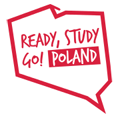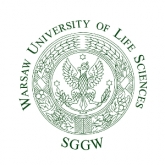Requirements: In order to be considered for admission to the 5.5 year degree programme at the Faculty of Veterinary Medicine, an applicant must have successfully completed the following: a high school certificate, a passing grade on the biology and chemistry entrance exams, submission of the online application form and all fees paid by deadline.
Recruitment: Application deadline: early admission - 1st January to end of May each year; late admission - 1st June to end of July each year.
Registration: is made exclusively by IMS: http://www.ims-medstudy.com/_Veterinary_School_5.5yr_Warsaw
Mission of the Faculty
Our mission is to provide a high quality teaching environement and excellent reseach-based teaching, education of veterinary science graduates able to handle wide variety of health, welfare and management problems with farm and companion animals. To undertake high quality research to support the teaching process as well as postgraduate and continuing education. To provide veterinary care for all species of animals by Faculty clinics.
Educational objectives
To provide a curriculum and the instructional resources necessary to enable students to obtain the professional title of lekarz weteryanrii (brit. Veterinary Surgeon; am. Doctor of Veterinary Medicine). To develop a curriculum that provides a strong foundation in veterinary medical scinces. It is expected that graduates will be well versed in fundamentals of veterinary medical sciences and will be able to meet the professional challenges they will encounter throughout their career.
Programme of studies
Program consists of 75 obligatory courses and electives. The diploma is received after passing all exams. Each academic year is divided into two semesters with a substantial winter and summer break. Students are taking roughly 860-hour classes (60 ECTS) per year. This programme is intensive, with students taking roughly 860-hour classes (60 ECTS) per year.
a) First year: students develop a basic understanding of the life sciences underpinning veterinary medicine and become familiar with veterinary and medical terms. The main courses are animal anatomy, histology and embryology in order to help students to obtain profound knowledge of the composition of the animal body.
b) Second year: students delve more deeply into the life sciences, particularly anatomy, physiology and veterinary immunology. In this year students begin studying microbiology and learn about animal breeding and nutrition. The introductio to animal well-being and ethology helps mastering future clinical courses.
c) Third year: students have mastered all basic courses and enter the precilinical courses. Students are exposed to imaging diagnostics principles and focus on clinicl diagnostics and public health protection.
d) Fourth year: students continue practising in the field, focusin ob a variety of animals, from fish, accompanying animals to ruminants and swine.
e) Fifth and Sixth year: contagious and internal disease and surgery techniques become a main focus as students investigate various animal disease and learn about animal obstetrics and gynecology. Faculty clinics and cooperating farms are also an important part of this year's studies.

